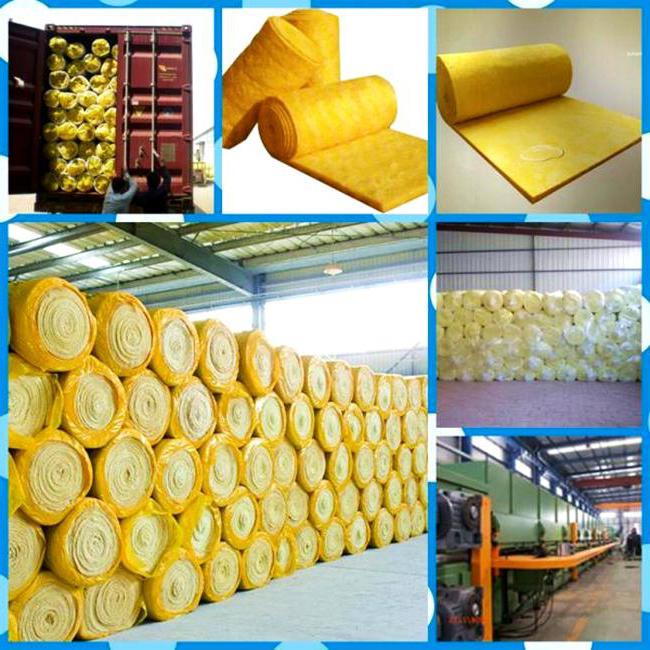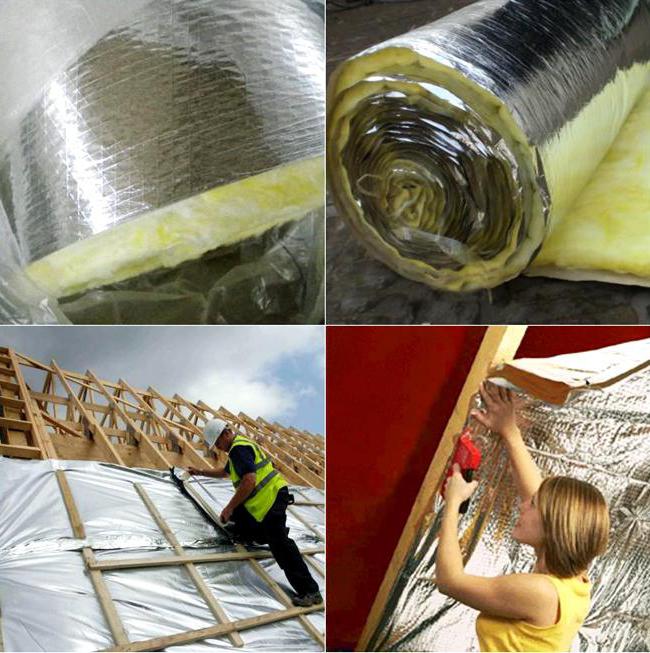Glass wool insulation is the most common material used for thermal insulation of various buildings: houses, baths, outbuildings. Today, the construction market has a wide range of new modern materials for insulation and sound insulation of buildings. But time-tested and attractive at an affordable price, glass wool remains in demand to this day.
What is glass wool
Glass wool is one of the types of mineral wool that has a fibrous structure and high thermal insulation performance. In the manufacture of glass wool, modern technologies allow the use of up to 80% of secondary raw materials (cullet). Partly due to this factor, the price of glass wool is 2-3 times lower than mineral wool from rock melt or blast furnace slag (from 900 rubles m 3 ). Accordingly, it is a cost-effective material.
Glass wool production
The process requires the use of technical resources. The traditional raw materials for the production of glass wool are sand, limestone, dolomite, soda and borax. Modern manufacturers replace the feedstock with cullet, which does not affect the quality of products, but significantly reduces its cost.
At the first stage, the initial components are poured into the melting furnace. In order to obtain the thinnest filaments with desired mechanical properties, a strict formulation of the melting mass is observed. After reaching a temperature of +400 0 C, molten glass, flying out of a centrifuge, is inflated with steam.
Further, glass filaments are treated with polymer aerosols and aqueous solutions of phenol-aldehyde polymer and go through several stages of conveyor alignment. Formed homogeneous fiberglass carpet at a temperature of +250 0 C is polymerized.
At the last stage, the amber-yellow plates of glass wool cool and cut.
Air-filled insulation has a large volume. For ease of transportation, the finished product is pressed to six times compression. After opening the package, the original volume is instantly restored.
Glass wool properties
Requirements for the main indicators of mineral wool are prescribed in regulatory documents (GOSTs). However, modern technological processes make it possible for manufacturers to produce mineral insulation with improved performance according to their own technical conditions (TU).

Glass wool fiber is 2-4 times longer than stone. With a thickness of 3-15 microns, glass wool insulation does not contain non-fibrous inclusions, due to which it is highly resistant to vibrations. The increased strength and elasticity of fiberglass determines a wide range of its application. The thermal conductivity of glass wool (0.03-0.52 W / m * 0 C) is slightly lower than that of other types of mineral insulation, but rather high relative to polymeric and other materials. Glass wool production technology gives it high temperature resistance. Fiberglass insulation material is non-flammable and withstands temperature extremes from -450 0 C to +700 0 C. The glass wool passes vapor well, repels moisture, is environmentally friendly, does not absorb chemical fumes and is easily mounted on surfaces of complex configurations. In addition, rodents and harmful insects do not start in it, since glass wool is not edible and prickly.
The disadvantages of fiberglass insulation include fragility of the fibers, low density and a tendency to shrink.
Types of thermal insulation glass wool products
Fiberglass produces several types of products:
- Soft mats and slabs due to their high elasticity fit tightly and are used when warming surfaces of complex configurations. Twisted into rolls, glass wool is significantly reduced in volume, as a result, reducing transportation costs.
- Semi-rigid and rigid plates withstand significant loads. To increase windproof properties, rigid plates are faced with fiberglass. Reliability of fastening without gaps is achieved by connecting rigid plates along the long sides to a tongue or groove.
Additional layers of foil or fiberglass increase the vapor barrier properties and prevent the subsidence of glass wool due to the precipitation of fibers.
The use of organic insulation
Glass wool is, first of all, a heat-insulating material. It is used in the construction of residential and industrial buildings as heat, wind, steam and sound insulation.
Glass wool insulation is used:
- For insulation of vertical, horizontal and inclined structures in buildings of any type.
- On external surfaces with obligatory plastering.
- In hinged ventilated facades.
- In fences: from the inside or inside of three-layer sandwich panels in metal sheathing, concrete or reinforced concrete panels.
- In multilayer coatings of flat roofs, it is used as the lower or upper heat and sound insulation layer without a cement screed.
- In frame buildings, for example, bathhouses, for insulation of walls and ceilings.
- At metallurgical, petrochemical and other enterprises for the isolation of oil and gas pipelines, pipelines and reservoirs of heating networks, industrial equipment and process pipelines.
Precautionary measures
One of the important advantages of glass wool is its simple and quick installation. The standard width of the fiberglass insulation is 61 cm, so wooden blocks or a metal profile with a pitch of 60 cm are printed on a flat surface. The rolls are pre-rolled, the sealed package is opened. It is more convenient to cut glass wool layers with a sharp knife. An allowance of 1-2 cm on each side allows the insulation to be mounted as tightly as possible. Glass wool is laid between the bars from the bottom up to the surface with waterproofing and fixed with brackets. On top of the insulation, vapor barrier and internal cladding are packed. At the end of installation, the glass wool insulation is absolutely harmless: it does not emit toxic substances, does not ignite, and small glass fibers do not scatter in all directions.

In the process of laying glass wool, small sticky particles are sprinkled, irritating the skin and mucous membranes of the nasopharynx and eyes. Baby powder or talcum powder helps protect hands from the penetration of glass splinters under the skin. It is necessary to work with glass wool in tight clothing, gloves, goggles and a mask or respirator.
How to clean clothes after laying glass wool
If glass wool gets on your skin, in no case should you rub this place. Crystals need to be gently shaken off or blown off. After the work is completed, the hair is thoroughly shaken off and a maximum cool shower with a strong pressure is taken without washcloths and soap. If you take a hot shower, then the fiberglass particles penetrate into the expanded pores of the water. After a shower, dry without wiping with a towel, and wash again with soap and a washcloth.
Work clothes after installation of glass wool are cleaned with a vacuum cleaner and stretched (rinsed) 3-4 times in soapy water and under running water. Cleaning and washing is recommended with rubber gloves. The dried clothes are vacuumed again. If the clothes are not cleaned, dry cleaning sometimes helps. More often, unnecessary old clothes are used to work with glass wool, and at the end of work they are thrown away.